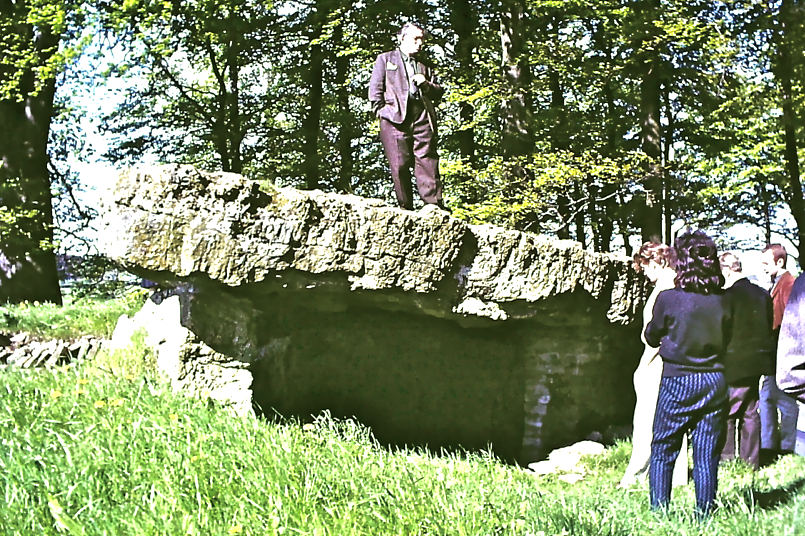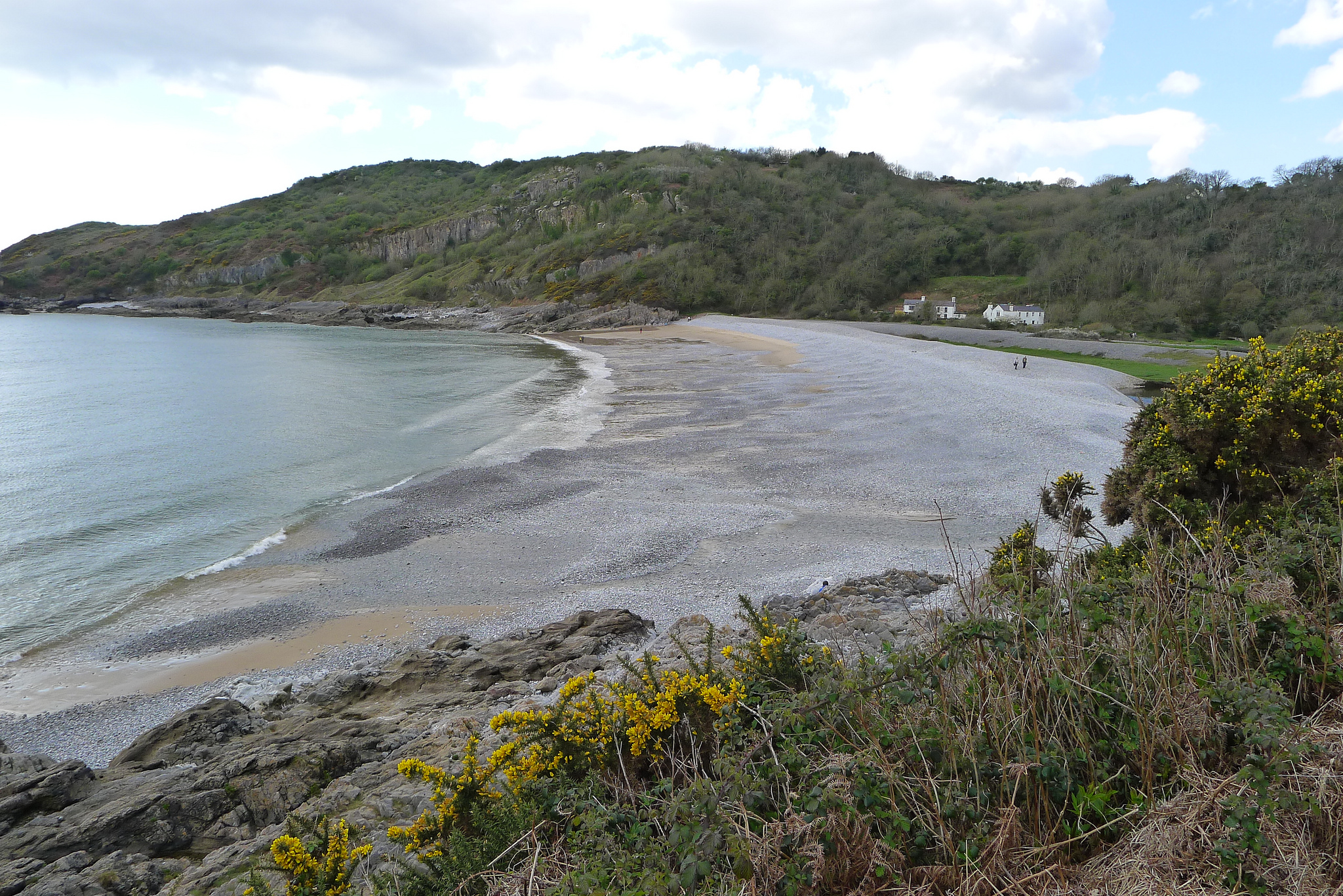|
Audrey Williams (archaeologist)
Audrey Williams ( Davies; 1902–1978) was a Wales, Welsh archaeologist. She was the first woman president of the Royal Institution of South Wales (RISW) and a Fellow of the Society of Antiquaries of London, Society of Antiquaries. She worked on several notable excavations during the mid-20th century in Wales, London and south-east England, including the Gower Peninsula, Verulamium and the London Mithraeum, Temple of Mithras in London. Biography Williams was born Audrey Davies in Dinas Powys, Wales. Her family moved to Swansea when she was 14, and she studied at Swansea Girl's High School. In 1920, she won a scholarship to Somerville College, Oxford, Somerville College, Oxford, to study English, the same year that the Statute for Degrees for Women was passed, giving University of Oxford#Women's education, women the right to take degrees. She returned to Swansea after graduation in 1923 and worked as a teacher at a local school. She resigned this post when she married her first ... [...More Info...] [...Related Items...] OR: [Wikipedia] [Google] [Baidu] |
Dinas Powys
Dinas Powys (; also spelt "Dinas Powis" in English) is a town and community (Wales), community in the Vale of Glamorgan, South Wales. Its name means "fort of the provincial place" and refers to the Dinas Powys hillfort, Iron Age hillfort which overlooks the village. Dinas Powys is south-west of the centre of Cardiff and is situated on the A4055 road from Cardiff to Barry, Vale of Glamorgan, Barry, making it a popular dormitory village for city commuters. It neighbours the larger town of Penarth. Although several housing developments have been added since the late 20th century, the old centre of Dinas Powys maintains a traditional, almost rural character. It has a village common and small independent shops, pubs, restaurants and community facilities. Garages, small supermarkets, a pharmacy and a veterinary practice can be found in other parts of the town. According to recent electoral rolls, the population is in the region of 8,800, making Dinas Powys the fifth largest settleme ... [...More Info...] [...Related Items...] OR: [Wikipedia] [Google] [Baidu] |
Glyn Daniel
Glyn Edmund Daniel (23 April 1914 – 13 December 1986) was a Welsh scientist and archaeologist who taught at Cambridge University, where he specialised in the European Neolithic period. He was appointed Disney Professor of Archaeology in 1974 and edited the academic journal '' Antiquity'' from 1958 to 1985. In addition to early efforts to popularise archaeological study and antiquity on radio and television, he edited several popular studies of the fields. He also published mysteries under the pseudonym Dilwyn Rees. Early life and education Daniel was born in Lampeter Velfrey, Pembrokeshire, a small village between Narberth and Whitland in south-west Wales, as an only child. His father, John Daniel, was the village schoolmaster there. When Glyn Daniel was five he moved with his parents to Llantwit Major in the Vale of Glamorgan. He attended Barry County School for Boys in Barry, where his academic ability led to him being awarded a State Scholarship (which enabled him t ... [...More Info...] [...Related Items...] OR: [Wikipedia] [Google] [Baidu] |
British Women Archaeologists
British may refer to: Peoples, culture, and language * British people, nationals or natives of the United Kingdom, British Overseas Territories and Crown Dependencies. * British national identity, the characteristics of British people and culture * British English, the English language as spoken and written in United Kingdom of Great Britain and Northern Ireland and, more broadly, throughout the British Isles * Celtic Britons, an ancient ethno-linguistic group * Brittonic languages, a branch of the Insular Celtic language family (formerly called British) ** Common Brittonic, an ancient language Other uses *People or things associated with: ** Great Britain, an island ** British Isles, an island group ** United Kingdom, a sovereign state ** British Empire, a historical global colonial empire ** Kingdom of Great Britain (1707–1800) ** United Kingdom of Great Britain and Ireland (1801–1922) * British Raj, colonial India under the British Empire * British Hong Kong, colonial H ... [...More Info...] [...Related Items...] OR: [Wikipedia] [Google] [Baidu] |
Welsh Archaeologists
Welsh may refer to: Related to Wales * Welsh, of or about Wales * Welsh language, spoken in Wales * Welsh people, an ethnic group native to Wales Places * Welsh, Arkansas, U.S. * Welsh, Louisiana, U.S. * Welsh, Ohio, U.S. * Welsh Basin, during the Cambrian, Ordovician and Silurian geological periods Other uses * Welsh (surname), including a list of people with the name * Welsh pig, a breed of domestic pig See also * * * Welch (other) * Welsch Welsch may refer to: * Georg Hieronymus Welsch (1624–1677), German physician * Gottfried Welsch (1618–1690), German physician * Heinrich Welsch (1888–1976), Saarlandic politician * Henry Welsch (1921–1996), American football and basebal ..., a surname {{Disambiguation Language and nationality disambiguation pages ... [...More Info...] [...Related Items...] OR: [Wikipedia] [Google] [Baidu] |
1978 Deaths
Events January * January 1 – Air India Flight 855, a Boeing 747 passenger jet, crashes off the coast of Bombay, killing 213. * January 5 – Bülent Ecevit, of CHP, forms the new government of Turkey (42nd government). * January 6 – The Holy Crown of Hungary (also known as Stephen of Hungary Crown) is returned to Hungary from the United States, where it was held since World War II. * January 10 – Pedro Joaquín Chamorro Cardenal, a critic of the Nicaraguan government, is assassinated; riots erupt against Somoza's government. * January 13 – Former American Vice President Hubert Humphrey, a Democrat, dies of cancer in Waverly, Minnesota, at the age of 66. * January 18 – The European Court of Human Rights finds the British government guilty of mistreating prisoners in Northern Ireland, but not guilty of torture. * January 22 – Ethiopia declares the ambassador of West Germany '' persona non grata''. * January 24 ** Soviet satellite Kosmos 954 burns up in Ea ... [...More Info...] [...Related Items...] OR: [Wikipedia] [Google] [Baidu] |
1902 Births
Events January * January 1 ** The Nurses Registration Act 1901 comes into effect in New Zealand, making it the first country in the world to require state registration of nurses. On January 10, Ellen Dougherty becomes the world's first registered nurse. ** Nathan Stubblefield demonstrates his Mobile phone, wireless telephone device in the U.S. state of Kentucky. * January 8 – A train collision in the New York Central Railroad's Park Avenue Tunnel (railroad), Park Avenue Tunnel kills 17 people, injures 38, and leads to increased demand for electric trains and the banning of steam locomotives in New York City. * January 23 – Hakkōda Mountains incident: A snowstorm in the Hakkōda Mountains of northern Honshu, Empire of Japan, Japan, kills 199 during a military training exercise. * January 30 – The Anglo-Japanese Alliance is signed. February * February 12 – The 1st Conference of the International Woman Suffrage Alliance takes place in Washing ... [...More Info...] [...Related Items...] OR: [Wikipedia] [Google] [Baidu] |
Pwlldu Bay
Pwlldu Bay or Pwll Du Bay () is a small beach on the south Gower Peninsula coast in south Wales. It is one of the more remote beaches and is not easily accessible by car, but there are several good footpaths leading to it. There is a nearby gully A gully is a landform A landform is a land feature on the solid surface of the Earth or other planetary body. They may be natural or may be anthropogenic (caused or influenced by human activity). Landforms together make up a given ter ... called Grave's End marked by a circle of limestone rocks. A number of people from a shipwreck that was found on the bay were buried in this gully. The ship was the ''Caesar'' which was wrecked on the beach on 28 November 1760. Pwlldu means "Black Pool" in Welsh External linksWelcome to Gower: Pwlldu Bay {{Gower Penins ... [...More Info...] [...Related Items...] OR: [Wikipedia] [Google] [Baidu] |
Brynmill
Brynmill is a suburb of the City and County of Swansea, Wales, UK. It lies about two miles (3 km) to the west of Swansea city centre. It is a residential area forming the southern part of the Uplands electoral ward. As it is close to Swansea University, many students choose to rent rooms here during term time. Aside from the student population, this is a fairly middle-class area. Brynmill is approximately bounded by Swansea Bay to the south; Brynmill Lane to the west; Glanbrydan Avenue to the north; Bryn-y-Mor Road to the north-east; and Guildhall Road to the south-east. Brynmill can be further subdivided between the upland area of Brynmill proper and the lowland area of St. Helen's close the sea. Brynmill is situated on hilly terrain. Many of the properties are built on slopes. Property subsidence is a problem here. Property prices here are around the national average. Council tax rates here are quite high. The area offers convenient access to the city centre shop ... [...More Info...] [...Related Items...] OR: [Wikipedia] [Google] [Baidu] |
Mithras
Mithraism, also known as the Mithraic mysteries or the Cult of Mithras, was a Roman Empire, Roman mystery religion focused on the god Mithras. Although inspired by Iranian peoples, Iranian worship of the Zoroastrian divinity (''yazata'') Mithra, the Roman Mithras was linked to a new and distinctive imagery, and the degree of continuity between Persian and Greco-Roman practice remains debatable. The mysteries were popular among the Imperial Roman army from the 1st to the 4th century AD. Worshippers of Mithras had a complex system of seven grades of initiation and communal ritual meals. Initiates called themselves ''syndexioi'', those "united by the handshake". They met in dedicated ''mithraeum, mithraea'' (singular ''mithraeum''), underground Roman temple, temples that survive in large numbers. The cult (religious practice), cult appears to have had its centre in ancient Rome, Rome, and was popular throughout the Western Roman Empire, western half of the empire, as far so ... [...More Info...] [...Related Items...] OR: [Wikipedia] [Google] [Baidu] |
Walbrook
Walbrook is a Ward of the City of London and a minor street in its vicinity. The ward is named after a River Walbrook, river of the same name. The ward of Walbrook contains two of the City's most notable landmarks: the Bank of England and the Mansion House, London, Mansion House. The street runs between Cannon Street and Bank junction, though vehicular traffic can only access it via Bucklersbury, a nearby side-road off Queen Victoria Street, London, Queen Victoria Street. City ward A street called Walbrook runs along the lower part of the brook's course. A valley is clearly visible; this can be seen most clearly at the junction of Walbrook and Cannon Street. On the street is the church of St Stephen Walbrook, which originally stood on the west bank of the stream, but was rebuilt around 1439 on the east side. In 1666 the church was destroyed in the Great Fire of London; Christopher Wren built a new church there in 1672, which still stands, to replace it. The Bank of England an ... [...More Info...] [...Related Items...] OR: [Wikipedia] [Google] [Baidu] |
Canterbury Roman Museum
The Canterbury Roman Museum in Canterbury, Kent, houses a Roman pavement which is a scheduled monument, in the remains of a Roman courtyard house which itself is a grade I listed building. The pavement was discovered after World War II bombing, and has been open to the public since 1946. The museum was established in 1961. It houses many excavated artifacts from Roman Canterbury, including the important late Roman silver hoard known as the Canterbury Treasure, together with reconstructions of the Roman town. History Background In the first century AD the Cantiaci were the inhabitants of Kent when the Romans captured a settlement on the River Stour and later called it Durovernum Cantiacorum, or ''stronghold of the Cantiaci by an Alder marsh''. The new settlement was laid out as a partially grid-patterned town with a theatre, temple, forum and baths. In the late third century, to defend against attack from barbarians a town wall was built with seven gates. The town then c ... [...More Info...] [...Related Items...] OR: [Wikipedia] [Google] [Baidu] |





